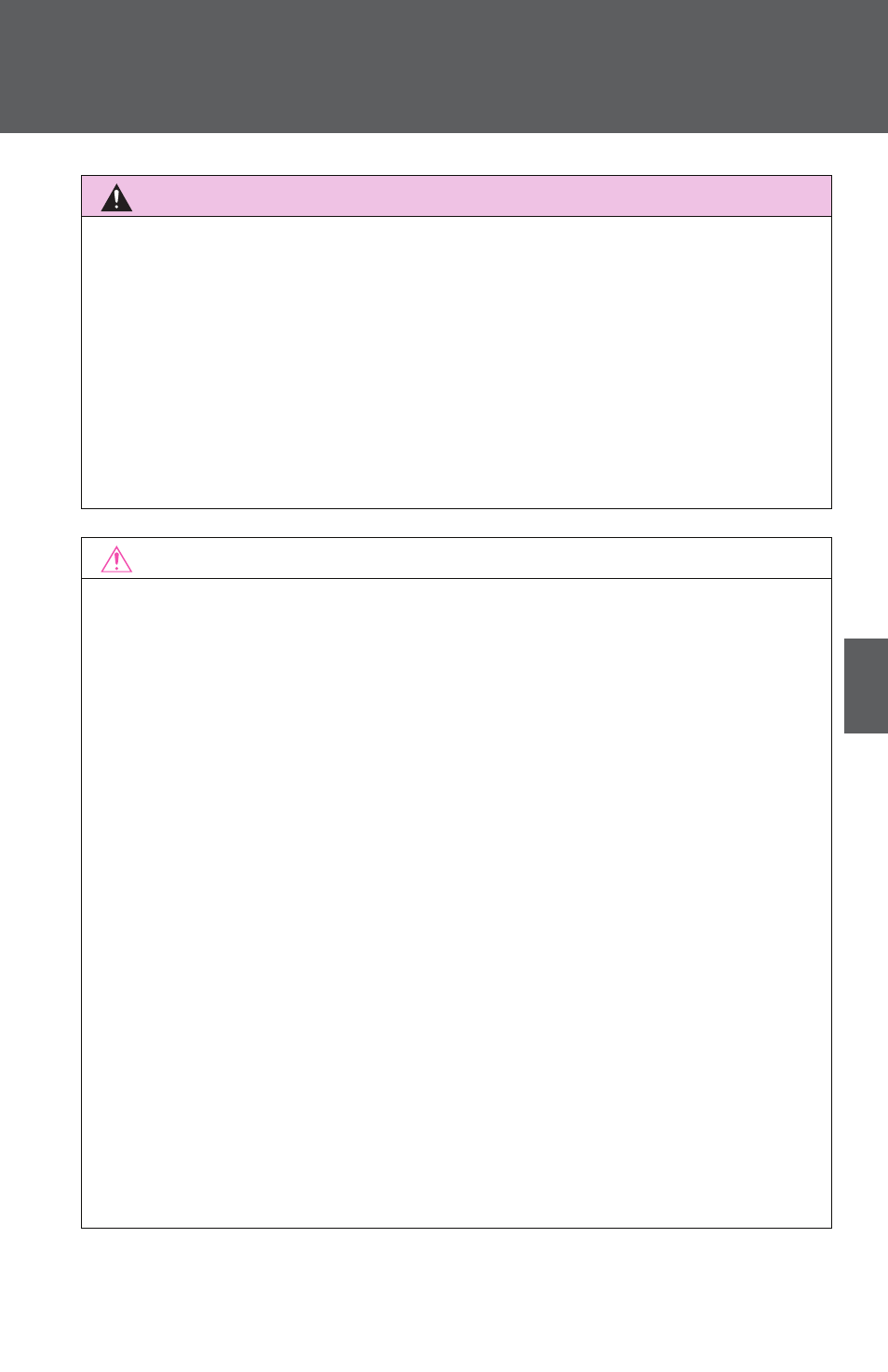TOYOTA 2011 Tundra User Manual
Page 574

553
4-3. Do-it-yourself maintenance
4
Mainten
ance an
d ca
re
CAUTION
n
When inspecting or replacing tires
l
Do not use tires that have been used on another vehicle.
l
Do not use tires if you do not know how they were used previously.
n
When initializing the tire pressure warning system
Do not push the tire pressure warning reset switch without first adjusting
the tire inflation pressure to the specified level. Otherwise, the tire pres-
sure warning light may not come on even if the tire inflation pressure is
low, or it may come on when the tire inflation pressure is actually normal.
NOTICE
n
Repairing or replacing tires, wheels, tire pressure warning valves,
transmitters and tire valve caps
l
When removing or fitting the wheels, tires or the tire pressure warning
valve and transmitter, contact your Toyota dealer as the tire pressure
warning valve and transmitter may be damaged if not handled cor-
rectly.
l
When replacing tire valve caps, do not use tire valve caps other than
those specified. The cap may become stuck.
n
To avoid damaging the tire pressure warning valves and transmit-
ters
Do not use liquid sealants on flat tires.
n
Driving on rough roads
Take particular care when driving on roads with loose surfaces or pot-
holes.
These conditions may cause losses in tire inflation pressure, reducing
the cushioning ability of the tires. In addition driving on rough roads may
cause damage to the tires themselves, as well as the vehicle’s wheels
and body.
n
If tire inflation pressures become low while driving
Do not continue driving, or your tires and/or wheels may be ruined.